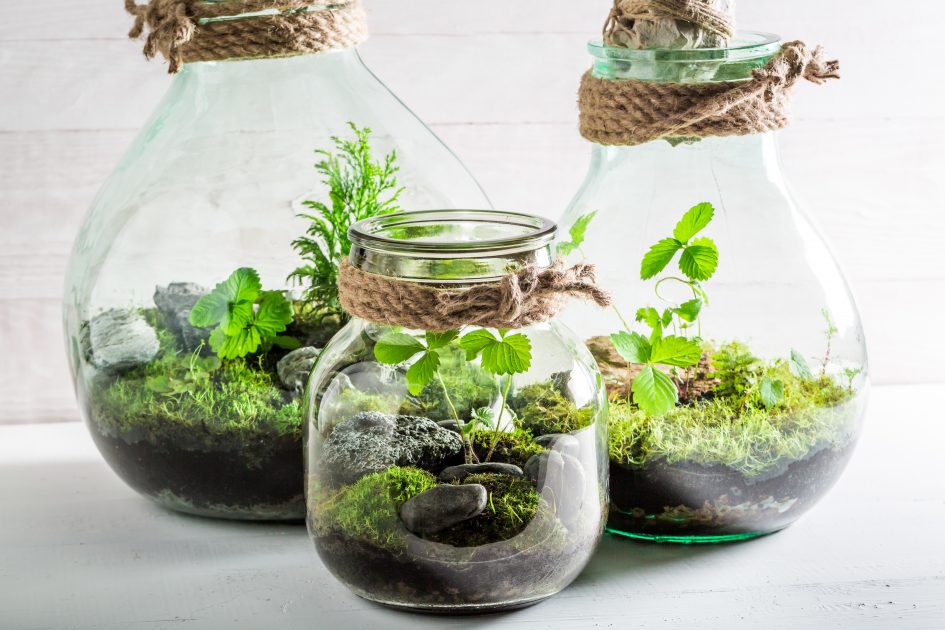Whether you’re hoping to reap the benefits of indoor plants, want to add some nice décor to your space or are looking for a creative craft to do with your kids while they’re out of school, building your own terrarium fits the bill. Houseplants can purify the air, lower your risk for illness, boost your mood, and enhance your concentration and memory.
A terrarium is a transparent container that houses a collection of small plants and is easy to create. You can find everything you need to construct this living decoration at your local garden or hardware store. You may even be able to find most of what you need laying around your house.
There are two types of terrariums – open and closed. Closed terrariums have a lid that encloses the moisture, resulting in a mini ecosystem. A small-scale water cycle is created that basically makes the garden self-sufficient. The clear container allows light to pass through so photosynthesis takes place (but it shouldn’t be placed in direct sunlight). This setting is perfect for moisture-loving plants, such as ferns, ivy and moss. Open terrariums do not have a lid. They’re great for plants that like drier conditions, such as succulents and cacti. Since they’re open to the air, a water cycle isn’t created and, therefore, need to be watered more often.
Here’s how to make your own miniature indoor garden:
- Start with a transparent container, such as a mason jar or old vase. The larger the opening, the easier it will be to work with.
- Make sure the container is clean and dry. If you want a closed terrarium, it should be sealable.
- Place rocks or gravel at the bottom to help with water drainage.
- Insert dried moss, mulch, sponge or the equivalent that’s saturated, but not drenched with water.
- Layer a couple inches of dirt; nutrient-dense potting soil mixed with the native plant soil is ideal.
- Add plants. Experiment with colorful varieties. Your selections should fit in the container without touching the walls. Don’t forget to remove any grime on the glass from the planting process.
- If you’re creating a closed environment, wait 24 hours to allow your new garden to breathe and adjust. After a day, make sure the soil is moist and then go ahead and seal it up.
“The Perks of Being a Plant Lover,” The Healthline Editorial Team, healthline.com, Oct. 25, 2016.
“DIY: A Mindful Terrarium,” Dr. Kathleen Hall, mindfullivingnetwork.com, Aug. 12, 2015.

